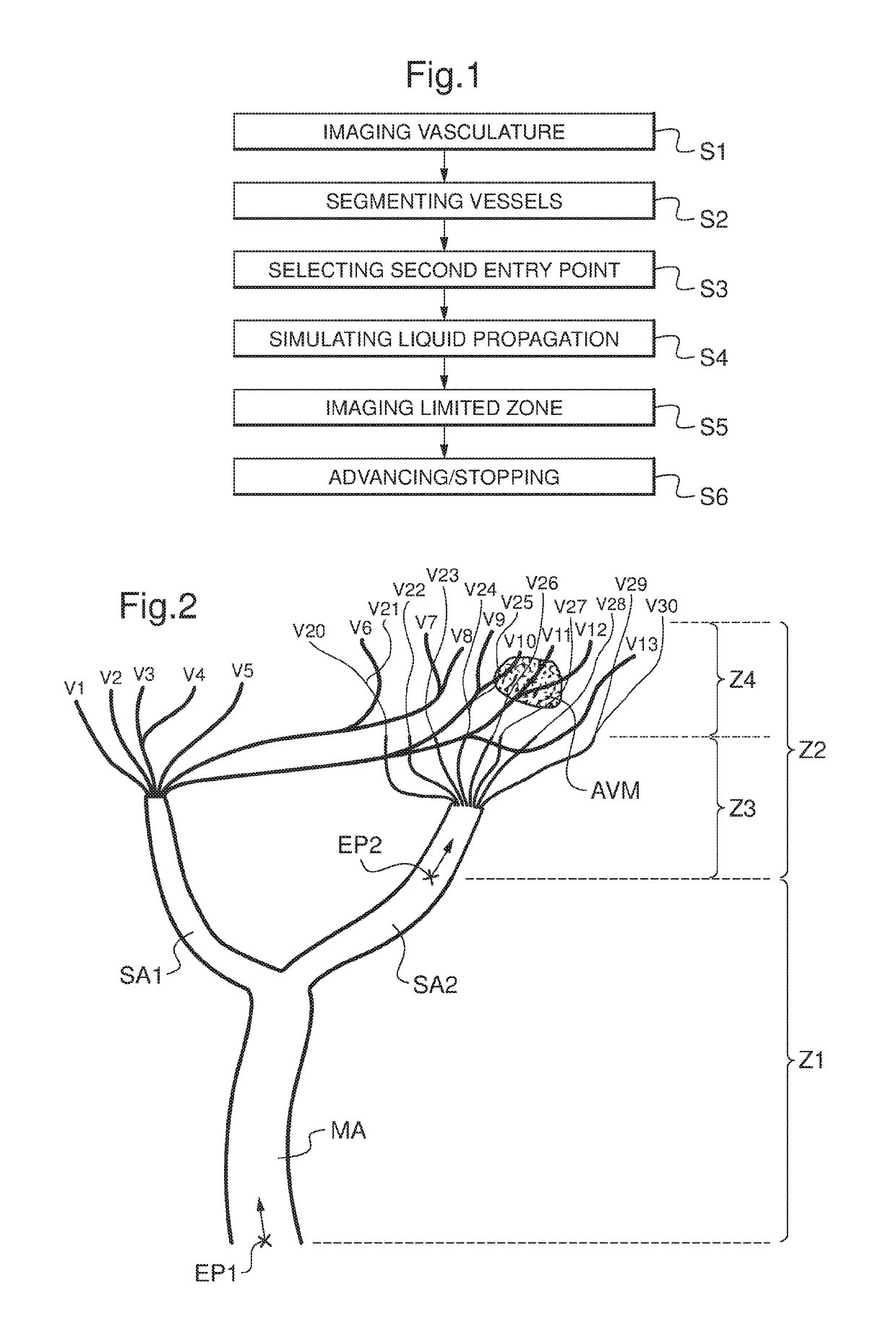Three dimensional imaging method of a limited zone of a patient's vasculature
a three-dimensional imaging and limited area technology, applied in the field of three-dimensional imaging methods of human vasculature, can solve the problems of difficult interpretation of difficult to build in the mind of the radiologist a clear representation, and difficulty in interpreting the actual local vessel configuration
- Summary
- Abstract
- Description
- Claims
- Application Information
AI Technical Summary
Benefits of technology
Problems solved by technology
Method used
Image
Examples
Embodiment Construction
[0032]FIG. 1 shows an example of the steps of a three dimensional imaging method of a limited zone of a patient vasculature, performed according to embodiments of the invention. Successively performed steps include a step S1 of imaging vasculature, a step S2 of segmenting vessels, a step S3 of selecting a second entry point, a step S4 of simulating a contrast propagation, a step S5 of visualizing a limited zone, and a step S6 of advancing, rewinding, stopping or looping through. These steps S1 to S6 are successively performed by an interventional imaging system. Steps S1 to S6 can also be considered as functional blocks of an interventional imaging system adapted to perform those steps.
[0033]In step S1 of imaging vasculature, three dimensional imaging of real contrast agent propagation, from a first entry point, in at least part of said vasculature, is made. First entry point is preferably the entry point of the main artery. Before step S1 is performed, a contrast agent has been inj...
PUM
 Login to View More
Login to View More Abstract
Description
Claims
Application Information
 Login to View More
Login to View More - R&D
- Intellectual Property
- Life Sciences
- Materials
- Tech Scout
- Unparalleled Data Quality
- Higher Quality Content
- 60% Fewer Hallucinations
Browse by: Latest US Patents, China's latest patents, Technical Efficacy Thesaurus, Application Domain, Technology Topic, Popular Technical Reports.
© 2025 PatSnap. All rights reserved.Legal|Privacy policy|Modern Slavery Act Transparency Statement|Sitemap|About US| Contact US: help@patsnap.com

